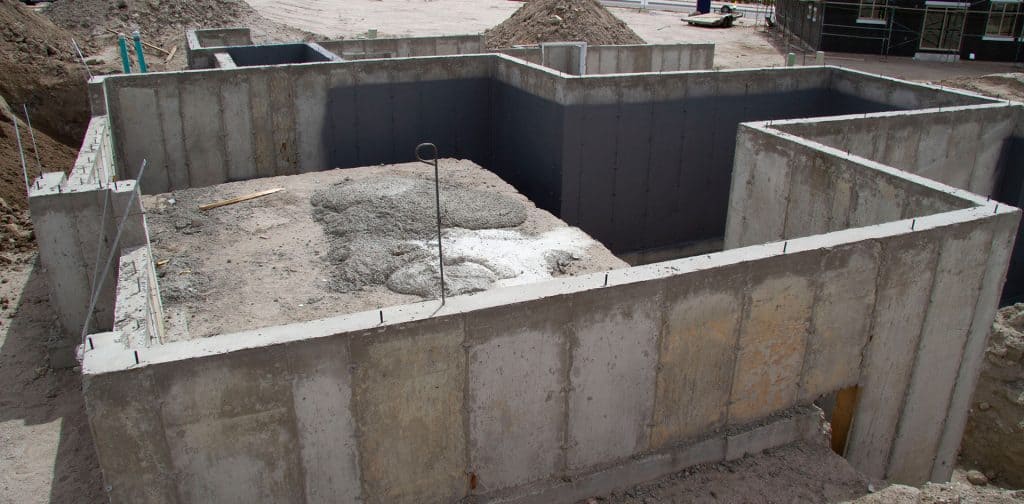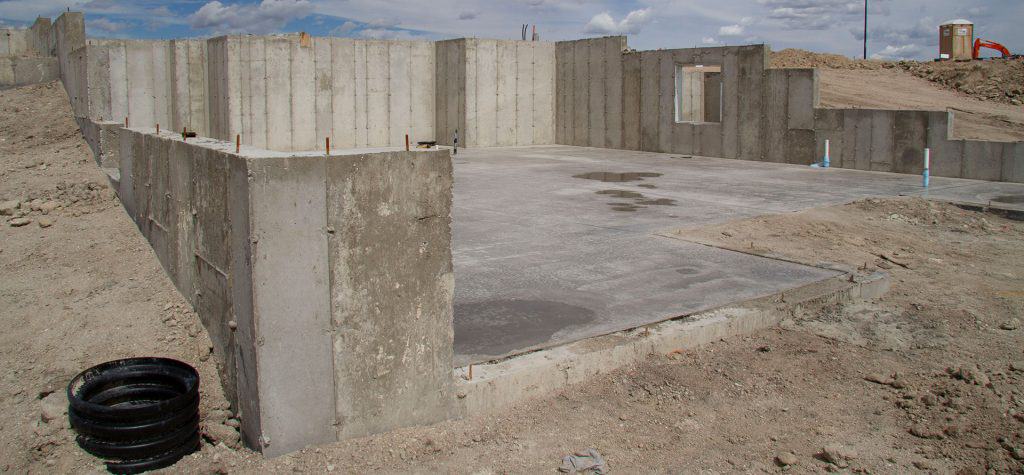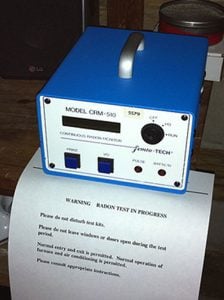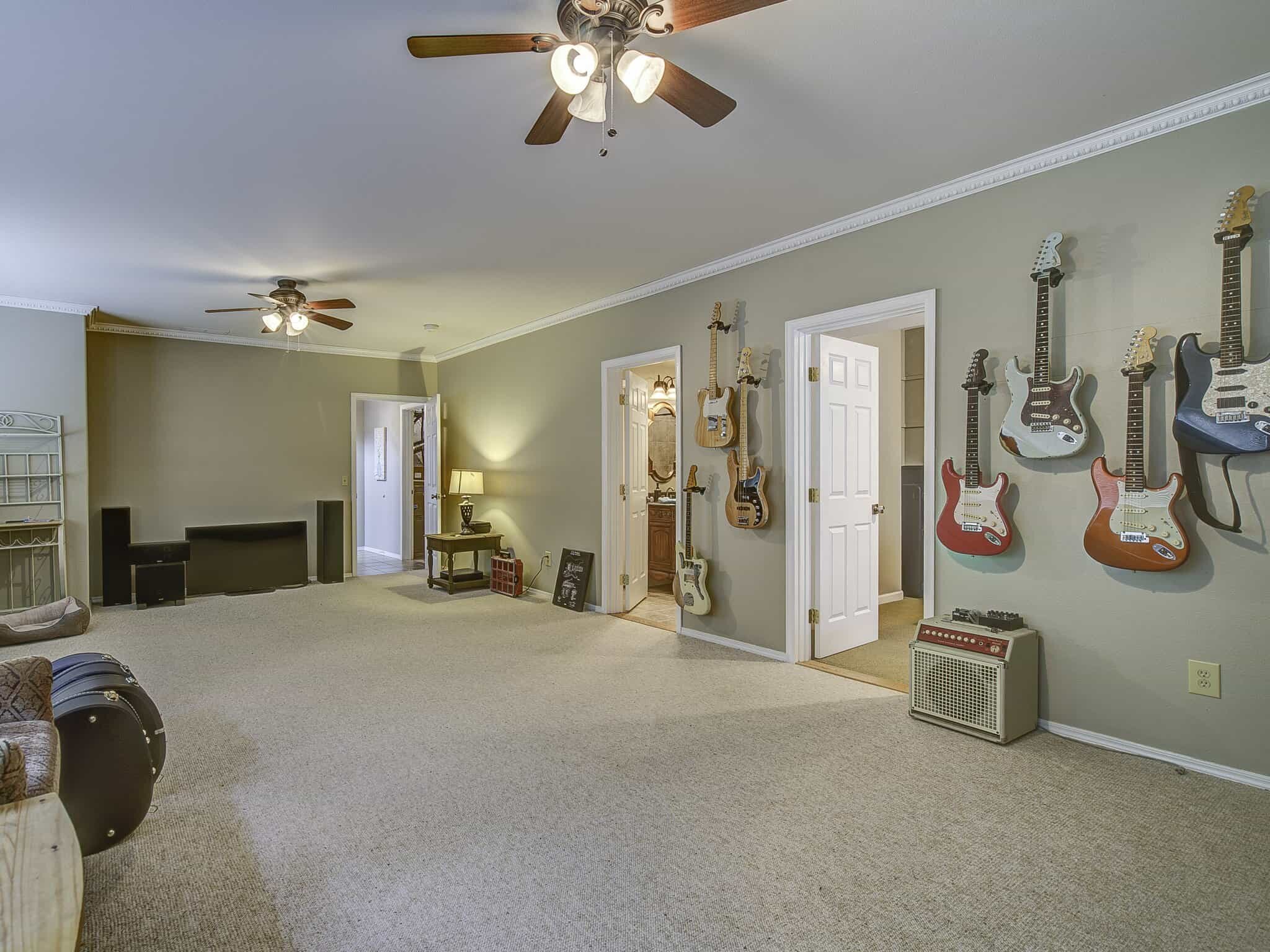If you’re thinking about expanding your home’s living space or enhancing its value, transforming an unfinished basement into a functional area can be a good investment. Before getting started, though, you’re going to want to do a little planning. Here are some key points to consider before starting this project.
First, if gaining equity is your primary goal, you need to determine how much value the renovation will add to your home. While a finished basement can make your home more appealing to potential buyers, it may not significantly increase the selling price.
The second thing to consider is your personal situation. Do you need an extra bedroom, a home office, a gym, or a playroom for kids? Sometimes finishing a basement is a good alternative to buying a new house. Even if the newly finished basement doesn’t immediately boost your property’s value, it can still be a wise investment if it fulfills your living requirements.
The final issue to evaluate is the cost. The investment required for basement renovations can be substantial, and you need to balance this against the benefits, both in terms of utility and a potential increase in property value.
Reimagine Your Basement: Is the Investment Worth It?
Basement renovation costs can range from $50,000 on the low end to hundreds of thousands of dollars for larger homes.
Under ideal conditions, the expected return on a basement renovation should be around 70% to 80%, so you shouldn’t expect a dollar-for-dollar return.
Investing $50,000 in basement renovations may only increase your home’s value by around $35,000. While this is a loss of $15,000, you might consider this cost as an investment toward improving your lifestyle. This investment ensures that your home better fits your needs, offering more enjoyment and convenience, which is a significant return.
You’ll need to weigh the cost of this type of project against your current financial situation and, your needs.
Optimizing Basement Renovation: How Quality and Design Impact Your ROI
The potential return on investment (ROI) from a basement renovation isn’t an absolute guarantee. The actual ROI realized hinges upon a variety of factors. Foremost among these is the quality of the finished area – a well-crafted, thoughtfully designed renovation can substantially boost the perceived value and allure of your property.
Trends in the real estate market also significantly influence your ROI. The demand for specific features or aesthetics can vary over time and location, making them a crucial consideration in renovation decisions.
Simply put, these various factors can cause your basement renovation’s ROI to differ from the initial estimates. This highlights the importance of prioritizing high-quality work and thoughtful design to truly maximize the returns on your investment.
For a more precise understanding of how a finished basement may influence your home’s value, consulting with an interior designer and a real estate agent can be valuable, especially considering their expertise in what home buyers in your area are looking for, and understanding of your local real estate market.
Real Estate expert Bill Gassett of Maximum Real Estate Exposure provided some excellent insights on what to consider when finishing a home’s lower level.
Today, basements have become central living areas for more and more people. Many utilize them just as much as the upper levels. Gone are the days of dark paneled walls. You’ll likely find many of the same high-end custom features as upstairs.
When finishing a basement, it’s essential to keep this in mind. You’ll want to have a space that everyone loves in the future when you sell. I recommend homeowners match the same finishes throughout the rest of the house.
For example, your baseboards and moldings should be of similar size and quality. I have seen some people skimp on this. Instead of looking like the space is part of the home, it seems like a cheap knockoff.
You should consider hiring professionals who are skilled craftsmen. It can make a significant difference when selling. Buyers know the difference in quality immediately. Skimping doesn’t make much sense for space that is used as much as it is.
A pro tip is to ensure all the proper permits are pulled. In my experience, many homeowners don’t in an effort to save money. Doing this can be a significant no-no. It can come back to bite you when selling. A diligent buyer’s agent will often check to see if proper permits have been pulled. Going through the permit process after everything has been completed for years can be arduous.
Bill Gassett – Real Estate Expert
Understanding Below-Grade Square Footage: Unearthing Value in Your Basement
One factor that can cause confusion about a home’s value is how appraisers differentiate between above-grade square footage (space above ground level) and below-grade footage (like a basement).
Appraisers treat below-grade square footage differently than above-grade square footage. It’s important to note that appraisers don’t even count below-grade square footage in the total square footage of your home for the purposes of the appraisal.
Appraisers often use standards set by the American National Standards Institute (ANSI) for measuring residential square footage. According to these guidelines, if a portion of a home is below grade, it can’t be included in the total gross living area (GLA). The GLA, which includes only above-grade space, is often the most significant factor in determining a home’s value.
However, that doesn’t mean below-grade space, like a finished basement, doesn’t add value. While it might not be considered part of the GLA, a finished basement can contribute to the home’s overall value. Appraisers will typically calculate this value separately from the GLA, considering factors like the quality of the finish, the basement’s functionality, and local market trends.
The Appraiser does give credit for below-grade space, but at a lower value and with an eye on quality and functionality.
The appraised value of the finished basement space is generally 50% to 60% of the value of the above-grade square footage. To maximize the cost/value ratio, market experts recommend keeping the basement budget below 10% of the existing home’s value. Staying between 10-15% is a good plan.
While upgrades don’t increase the overall square footage of the house, they can add value and are often referred to by appraisers as “home improvements” or “value-added improvements.” These can encompass a range of modifications, from basement refinishing to kitchen and bathroom renovations, landscaping, or the addition of energy-efficient features.
While they might not increase the size of the property, these improvements enhance the appeal, functionality, and energy efficiency of the home and can significantly influence a property’s appraised value.
Is Now The Right Time to Finish Your Basement: An Informed Evaluation
Many people choose to ride the wave of appreciation and never even consider finishing their basements to add equity to their homes. If you know you are going to be selling your home within a few years, it probably doesn’t make sense to finish your basement.
If, on the other hand, you are going to stay put for a while, you might want to finish a basement for a number of good reasons.
Maybe you need extra living space for a growing family or a home office? Do you love watching movies, sports, or doing crafts? Are you looking to update and think the added finished space will increase the value of your home? These are all good reasons to finish a basement, but only you will really know if the timing is right.
Smart Renovations: Transform Your Basement without Breaking the Bank
Your basement offers a great opportunity for a cost-effective place to add living space to your home. Finishing a basement is usually about half, or sometimes even a third of the cost you’d pay for an addition on your main or second floors. This is because the foundation walls are already there, saving you money on exterior cladding, windows, and lots of above-grade framing.
Transforming your basement into a fully functional space can be a smart move to increase your home’s size without draining your wallet. But remember—keep an eye on your property’s overall value. In other words, avoid turning your basement into a mini-Versailles if it’s not going to pay off in the long run.
The Art of Basement Renovation: Achieving Cohesiveness and Functionality
Appraising is always dependent on saleable features. But remember, the finished basement will never reach par with its main-floor sibling. High-end finishes have little value if natural light and low ceilings make the space dark and crowded.
The more the basement resembles above-grade living space, the higher the relative value.
Creating a seamless transition between your main living areas and your basement can make your home feel larger and more cohesive. Here are some tips to make your basement feel more like the main level of your house:
Maintain a Consistent Design: Carry over the style, color scheme, and general decor aesthetic from your main floors into your basement. This continuity in design will make the basement feel like a natural extension of your home.
Ensure Adequate Lighting: Basements often lack natural light, which can make them feel dark and closed off. To counteract this, install ample lighting. Recessed can lights, pendant lights, and lamps can all contribute to a warm, inviting atmosphere. If possible, adding egress windows can also bring in natural light.
Ceiling Height: A low ceiling can make a basement feel cramped and unlike the rest of your home. If possible, opt for a higher ceiling during renovation. If you already have a low ceiling, painting it a light color can help it appear taller.
Quality Flooring: Don’t skimp on basement flooring. Consider using the same or similar flooring materials as on your main level to create a seamless transition. We are even starting to see hardwood flooring in basements.
Temperature Control: Basements can be colder than the rest of the house. Installing a separate heating zone, using a space heater, or adding a fireplace can keep the basement comfortable.
Finish Walls Properly: Drywall, paint, and molding should be as carefully considered in the basement as they are on the main levels of your house.
Functional Layout: Design the basement with a layout that serves your needs and mirrors the functionality of your main level. This could be an open concept design or specific rooms like an extra bedroom, bathroom, home office, or playroom
Add a Bathroom or Kitchenette: Adding these facilities can make the basement feel like a complete living space.
Remember, every house and basement is unique, so tailor these suggestions to fit your home’s specific needs and structure.
Why Basements? Understanding the Need for Basements in Homes
A basement is more than just an extra room or storage space; it serves a vital role in maintaining the integrity of your house. This is particularly crucial in colder climates where frost can pose a real threat to the stability of your home’s foundation.
In essence, the basement acts as the house’s thermal buffer. The walls of the basement, extending several feet beneath the ground, shield the foundational footers from frost. Why is this necessary? Frost can result in the cracking and eventual destruction of these footers, triggering serious foundational issues and jeopardizing the overall structural stability of the home. It’s a threat you don’t want to ignore.
When we delve into the specifics, the required depth for effective frost mitigation is typically around 36 inches below grade, although this can extend to 42 inches in more extreme climates. It’s about going that extra mile (or foot) for your home’s safety.
Now, consider the 8 to 10-foot wall heights of a modern basement. These towering walls do more than create a spacious interior. They ensure the footers stay toasty and safe, providing an extra layer of protection from the biting cold outside.
In summary, a basement isn’t just a popular architectural choice; it’s a strategic one. It safeguards your home’s foundation, ensuring durability in the face of frost, and underscores why many houses, especially in colder regions, have this unique subterranean space.
Exploring Different Types of Basements
There are essentially three types of basements. Full basement, Garden level basement, and walkout basement. The Contour of your building site dictates the type of basement you end up with.
Full basement – This is the most common type of basement. You will generally see this very flat Terrain. The wall Heights for this basement are the same all the way around. In other words, the entire basement is below grade, therefore, receiving a lower value on an appraisal.

Garden-level – This type of basement features some above-grade square footage. Windows in this basement may be partially above grade. These basements receive more natural light, and because some portion of the basement is above grade, they are valued slightly higher than the full basement.
Walkout basement – As the name suggests, walk-out basements allow egress in and out of the lower level of the home. We generally see this Foundation type on a sloping lot. There are variations on the walkout basement; the doors can be on the side or the back of the house. Because a large portion of this type of basement is above grade, the walkout basement carries the highest dollar credit on the appraisal. Generally, these basements offer significant natural light and create options for enhanced outdoor living due to easy access to the backyard.

Concerns About Basements
There are certain concerns homeowners need to be aware of when it comes to basements. It’s important to keep in mind that your basement is for the most part underground. So, the primary concerns revolve around things like flooding from water and infiltration from gases like radon.
Flooding in the Basement
One of the biggest concerns we see about basements is flooding. Generally, flooding occurs in one of two ways: natural or man-made.
Let’s start with man-made since most of the plumbing for your home starts in the basement and most of the wastewater leaves your home for the basement, this concern is valid.
There are concerns about drain and sewer backups. it’s important when building your home or before finishing your basement to look at these systems and ensure there are fail-safe mechanisms in place to protect your investment.
Water heaters are another concern for flooding in basements. Cracked water heater tanks can create a real mess soaking carpets, baseboards and in some cases, sheetrock. Once again your contractor can set up drain and pan systems to prevent this from happening.
Nature also presents some serious concerns for homeowners. Most modern homes with basements pay special attention to drainage around the house’s foundation. Proper grading and Swails are established to keep water away from the foundation.
If the home has a basement, there should also be a perimeter drain along the outside of the foundation walls and just below the slab. This drain is installed to move any water away from the foundations’ footers and out to the storm sewer.
In the event this doesn’t drain fast enough, the builder might install a sump pump. This pump sits in a pit below the perimeter drain and pumps water out and away from the foundation.
Radon in the Basement

Radon is another concern for many when it comes to living in the basement. Radon is a colorless odorless gas that occurs as a byproduct of the breakdown of certain minerals. Radon according to the EPA, is the second biggest cause of lung cancer.
Testing for Radon is a very simple process and mitigating the gas from your basement living space is very common. So, if your test results come in above EPA acceptable levels it’s not the end of the world.
It’s important to note that Radon is a very controversial subject, and there is a wide range of opinions as to its effect on humans. At the end of the day, when it’s time to sell your home, it’s not your opinion that matters; it’s the opinion of the buyer.
Given the cost and ease of installation of modern radon mitigation systems, it makes sense to add this to your basement before starting construction.
Planning
The planning stages of any basement project are where dollars are gained or lost. This is the time to seek help from professionals. REALTORS® know what sells and a good general contractor we’ll know what things cost. Use these types of professionals to make sure you don’t overbuild your basement or make it so highly personalized that you’ll have problems when you go to sell.
There are certain guidelines you’ll want to follow as you think about the process.
Basement Design Trends
Trends come and go, but the finished basement is becoming the norm. The following five trends illustrate the evolving role of the basement in everyday life.
The Open Floor Plan – The open concept has re-defined the family’s main living space for the last two decades. Now its popularity has migrated to the basement, using the natural expanse – maximizing using available light and airflow. Additions like a mini-kitchen or bar enhance comfort and use.
The Main Living Extension – In years past, the finished basement was a land of experimentation. Bold colors, exotic décor, themed spaces, and over-stuffed recliners have been replaced with the refinement and design found on the main level. Wider staircases create a visual invitation as well as a common connection. The large family room is popular, as is the entertaining space complete with wine cellars, and a wet bar.
The In-Law Suite – Bedrooms and a bathroom have long been staples in the finished basement designed for a growing family. However, the allure of the master suite has migrated south. The convenience, amenities, and comfort of the en-suite bedroom are perfect for guests and visiting parents. Some go as far as adding an additional laundry room.
The “Specialized” Room – With the popularity of the open concept, specialized rooms have found their niche. The Media Room, home theater, the Musician’s Audio Room, the Workout Room or Craft Room all have their unique fan clubs. Each is specialized and, if true to their descriptor, will bear unique expenses. Word of advice – the more specialized the room, the more costly and the less likely the re-sale will match the dollar investment.
The Walkout – Although the walkout basement is natural for a sloping site, more and more homeowners are investigating this possibility. The abundance of light streaming into an otherwise dark basement easily convinces many of the potential. Remember – a talented, experienced contractor should be the FIRST call!
Planning for the Future – Both aging in place and creating space for aging family members in a home have become very popular. Finish your basement offers a great opportunity to enhance accessibility in your home. Unfortunately, this is one of the various aspects we often overlook when building. Finishing the basement gives us an opportunity to add accessibility features like lifts and elevators.
Finishing a basement wisely and well can have as much as a 70% payback, making it one of the smartest re-modeling or new home extensions. As exciting as finishing a basement can be, remember, this is a major construction project. A building permit is REQUIRED. Throughout the process, electrical, plumbing, energy, drywall, hanging, framing, and windows are inspected to meet local building codes.
Finally
Finally, when it is time to sell, it’s important to work with a REALTOR® who understands valuation and appraisal practices. When pricing your home, the agent should use comparable sales. If these comparable sales have finished basements, adjustments need to be made, plus or minus, to account for any differences.
If your agent doesn’t know how to do this, you should consider this a major red flag. Incorrectly pricing your home based on the finished basement square footage can become a real issue during the appraisal process. The appraisal occurs pretty far into the closing process and having to renegotiate the sales price at this point can cost thousands to tens of thousands of dollars.
Ensure you work with someone who understands how to Value basements across comparable sales.
If you have questions or help, remember Springs Homes is an experienced REALTOR® with long-earned relationships throughout the design and construction industries. Contact us at….719-388-4000 or online.

